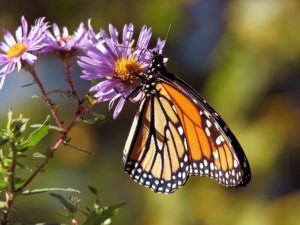Historically Low Numbers for the Annual Survey of Migrating Monarchs
- NPG
- February 3, 2021
- NPG Commentary
- 0 Comments
February 9, 2021
Historically Low Numbers for the Annual Survey of Migrating Monarchs
What is Happening to the Monarch Butterfly Species Population?
The annual winter count of monarch butterflies yielded much less than ever before. The Xerces Society for Invertebrate Conservation conducted their yearly survey of the migrating population of butterflies and determined: “With approximately 95% of the data in, only 1,800 monarchs have been reported. We anticipate a final total of less than 2,000 monarchs overwintering here in California this year.” Last year, the Xerces Society counted about 29,000 butterflies in their annual survey, and 27,000 the year prior.
With such a drastic fall in numbers, the monarchs’ fate as a species is in question. An article by KFOR News explains where the monarch species stands with regards to being considered endangered, noting: “On December 15, 2020, the U.S. Fish and Wildlife Service announced that listing the monarch as endangered or threatened under the Endangered Species Act is warranted, but precluded by higher priority listing actions.” A designation as significant as being listed as endangered is ideal because, according to the National Wildlife Foundation, it means the species will receive “special protections by the federal government. Animals are protected from ‘take’ and being traded or sold…The law also protects against interfering in vital breeding and behavioral activities or degrading critical habitat.”
Monarchs face obstacles on many fronts. Their lifecycles, which the U.S. Forest Service says is generally 2 to 6 weeks, “except for the last generation of the year, which can live up to 8 to 9 months.” Other serious obstacles such as climate change, habitat destruction, and pesticides all aid in decimating the monarch’s natural seasonal habitats. Monarch caterpillars are very particular in that they only feed off the milkweed plant. Fox59 News explains why this gets complicated so quickly, saying: “Scientists say the butterflies are at critically low levels in western states because of the destruction of their milkweed habitat along their migratory route as housing expands into their territory and use of pesticides and herbicides increases.” The article also mentions the surge of large-scale wildfires in the U.S. West as a possible component of the severely decreasing number of monarchs.
Per the Smithsonian’s National Museum of Natural History, plants and animals’ extinction rate is at an all-time high. The website notes: “Scientists agree that today’s extinction rate is hundreds, or even thousands, of times higher than the natural baseline rate. Judging from the fossil record, the baseline extinction rate is about one species per every one million species a year. Scientists are racing to catalog the biodiversity on Earth, working against the clock as extinctions continue to occur.”
NPG believes it is up to every able human being to live responsibly alongside our ever-depleting natural habitats. By working together to slow, halt, and eventually reverse population growth, we can turn the tides in our favor and reduce climate change, habitat destruction, and the use of pesticides and herbicides. Protecting our fragile environment for future generations must become a top priority for everyone.
To read more about the environment and other population issues, please see our Forum paper series, notably:
Will Affluence Ruin the Environment?, by Edwin S. Rubenstein
The True Environmental Disaster – The Silence on Our Growing Overpopulation, by Michael G. Hanauer
